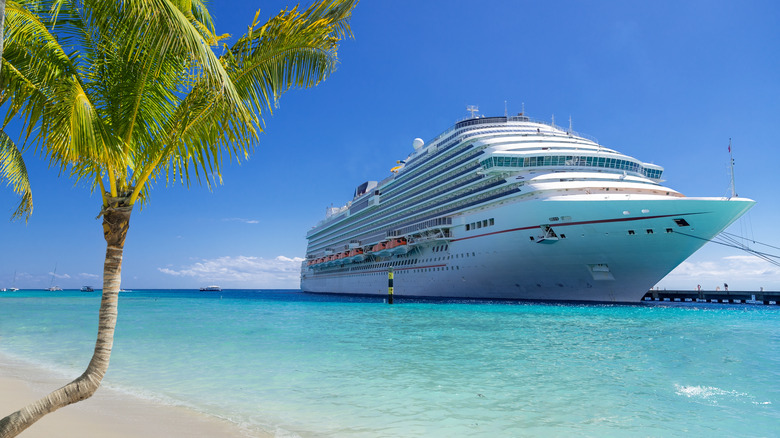Tourist traps exist everywhere, but learning how to avoid them in an unfamiliar country isn’t as easy as it may seem. This is especially true if you are visiting a location by way of a cruise. The allure of convenience is everywhere at a cruise port — from vendors promising a “good deal” to taxi drivers trying to convince you they know the “best route to town.” If you are cruising to the Caribbean for the first time or are just unacquainted with a place you may be stopping in, we can help you spot the tourist traps to avoid on your vacation.
Not everything labeled a “tourist trap” is actually a trap. Some destinations, tours, or photo spots may be kitschy but are often worth a try because of their overt cheesiness. However, we are sharing places and things you really should stay away from if you don’t want to waste time and money. Considering comments from travelers on Tripadvisor and expert advice from experienced travel writers, these are the tourist traps you need to steer clear of on your Caribbean cruise.
Overpriced jewelry stores

Travelers often encounter jewelry stores near cruise ports banking on the impulsive decisions of tourists. These stores are strategically located to attract visitors fresh off the ships, showcasing dazzling displays that can be tempting at first glance. However, the prices at these establishments often far exceed what one might find a little further away from the tourist hubs.
To avoid overspending on jewelry that may not be worth its price tag, do your research ahead of time. Learn where to find local jewelers or the name of a local merchant. Also, consider waiting to purchase until you can verify the value of what you’re buying. This ensures you get more for your money and allows you to locate unique pieces that are not mass-produced for the tourist market.
Allie Hubers, writer for the unofficial fansite Royal Caribbean Blog, wrote, “While purchasing affordable jewelry in the Caribbean is a common practice, Diamond’s International is one tourist trap you should rethink visiting.” She continued her statement by reminding readers that Diamond’s International “is likely receiving a financial kickback from the cruise lines,” which is why many cruise lines advertise their store throughout their ships and marketing materials.
Crowded beaches close to ports
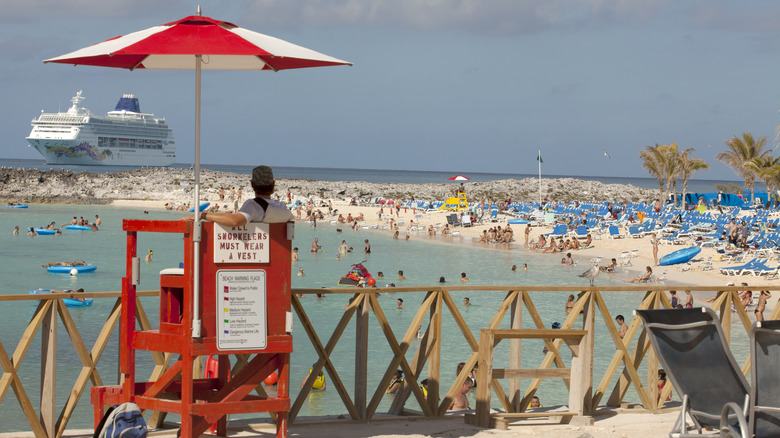
Beaches near cruise ports are convenient but often suffer from overcrowding. Everyone disembarking the cruise can see the beautiful Caribbean beaches from the ship, and so can other passengers on other cruise lines docked nearby. These beaches may be quick to access, but the crowds may diminish the quality of your beach day.
The beaches cater to the influx of tourists, leading to packed sands and busy waters that can detract from the serene beach experience many seek. Instead, venturing a bit further from the port can lead you to less crowded, more tranquil Caribbean beaches where the essence of the destination’s natural beauty shines through. These quieter spots offer a more authentic experience, allowing visitors to relax and enjoy the surroundings without the bustling crowds typical of port-proximate options.
Travel website The Getaway offered a few reasons why beaches in the Caribbean can become overcrowded. It cited the Cayman Islands capital of George Town as a prime example of a tourist trap. Many cruise lines stop at this port on their Caribbean itineraries, and because “George Town has a smaller coastline than some islands,” the beaches become quickly packed with visitors.
Chain restaurants
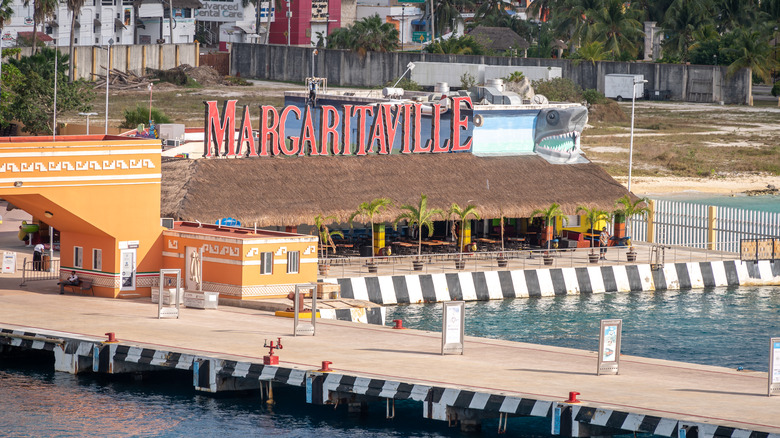
Jewhyte/Getty Images
While familiar, international chain restaurants near the port offer the same fare you can find back home. Traveling is an opportunity to try something new, and these chain restaurants lack local flavor and charm. Dining at these establishments means missing out on the region’s culinary culture and unique dishes. Local eateries provide a taste of the area’s gastronomic delights and support the local economy. Ben Souza of cruise-focused website Cruise Fever wrote, “I’ve never understood why someone would travel to a foreign country that is loaded with cultural experiences and natural wonders but spend their time at Senor Frogs or Margaritaville. There’s a reason why they put these right by the piers at many cruise ports, to suck you in.”
Experiencing local cuisine is a crucial part of traveling, offering insights into the culture and traditions of the place you’re visiting. It’s an opportunity to explore new flavors, ingredients, and cooking methods, enriching your trip far beyond what any international chain could offer. One Tripadvisor user commented on a popular restaurant in Jamaica, Floyd’s Pelican Bar, writing, “Tourists trap where you pay $40 returns to go on a boat that leads to this nightmare bar where drinks and food are expensive, music is super loud and you are stuck drinking and eating on the side where there is no sun.”
Generic souvenir shops
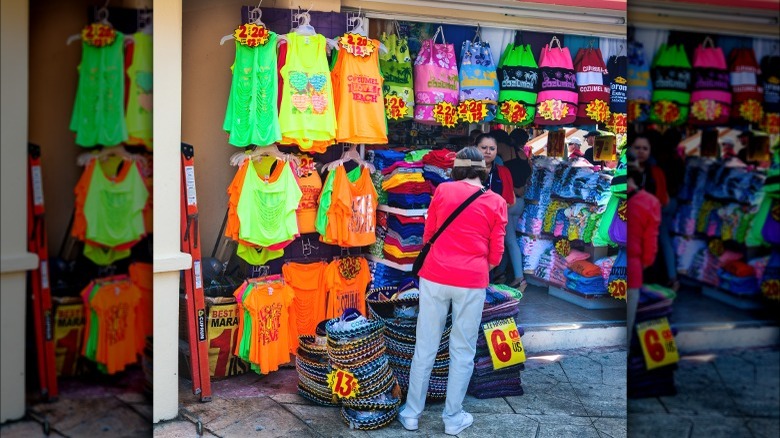
Kenwiedemann/Getty Images
Travelers love mementos of their journeys, and there is nothing inherently wrong with purchasing a budget-friendly souvenir to take home. However, the souvenir shops close to the ports often sell generic, mass-produced items that lack the authenticity and uniqueness everyone looks for in a worthy memento. These items, while convenient to pick up, do not truly represent the culture or craftsmanship of the destination. Additionally, they are often outrageously overpriced and involve haggling with vendors, which isn’t always a pleasant experience.
Ben Souza wrote on Cruise Fever, “If you are forced to walk through a shop, they are hoping for impulse buys and you likely won’t be getting a good deal. If these stores were really that good to shop [at], they wouldn’t need to force everyone to walk through them.” Instead, seeking locally made souvenirs can provide a more meaningful memento of your trip. Local artisans and craft markets offer unique items, support the local economy, and preserve traditional crafts. These souvenirs carry stories and personal touches that mass-produced items cannot, making them far more special keepsakes.
Overhyped excursions
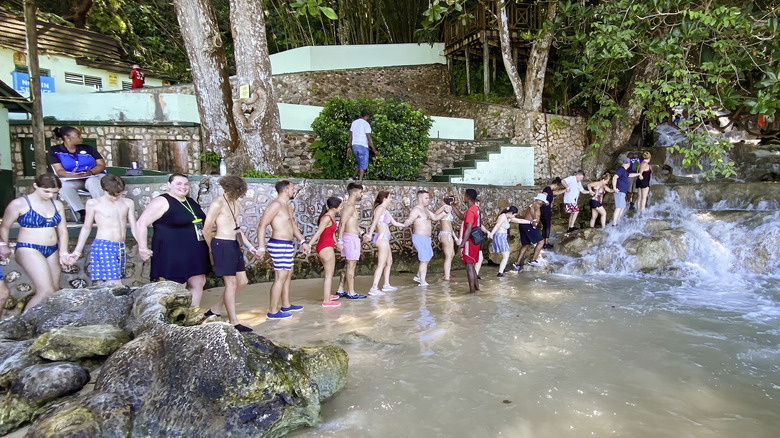
Emson/Getty Images
Excursions heavily marketed to tourists can sometimes fall short of expectations, offering a diluted version of the “authentic” experience they promise. High prices and crowded groups can detract from enjoying what could otherwise be a highlight of your trip. While booking an excursion through your cruise line may be more convenient, everyone else onboard is probably thinking the same way you are.
Allie Hubers wrote on the Royal Caribbean Blog that Dunn’s River Falls in Jamaica is “a top attraction for visitors and cruisers alike,” which has only added to the overcrowding issue there. “If you’re taking an excursion through the cruise line, you can expect dozens of other tours visiting at the same time. You even need to form a human chain to navigate the falls with your guide to ensure your group stays together,” she explained.
Researching and choosing excursions that align with your interests and offer a genuine insight into the destination can significantly enhance your venture. Smaller, locally run tours often provide more personalized and immersive experiences, allowing for deeper exploration and interaction with the local culture and environment. Choose your excursions wisely, or choose none at all and explore the destination in your own way.
Timeshare presentations

antoniodiaz/Shutterstock
Cruises are not inexpensive vacations. It can be very tempting to jump at the opportunity to score a discount for future travel or pick up something “free” just for spending “a few minutes of your time” listening to someone talk. However, your vacation time is as valuable as your money on a cruise, and listening to a timeshare presentation wastes your limited hours.
These presentations are infamous for being high-pressure and time-consuming. We have never been to one that isn’t uncomfortable or expedient. Additionally, deciding to invest in a timeshare can be a significant financial decision, and most travelers want to enjoy their vacations without thinking about investing their money or if they can even afford to invest it in a timeshare.
While the offer might seem tempting, it’s important to consider the value of your time and the likelihood of benefiting from the presented timeshare deal. In many cases, the commitments made are for the long term and might be financially burdensome. Avoiding timeshare presentations while traveling can save you from potential stress and regret, leaving you more time to enjoy your vacation freely.
Street vendors near tourist spots
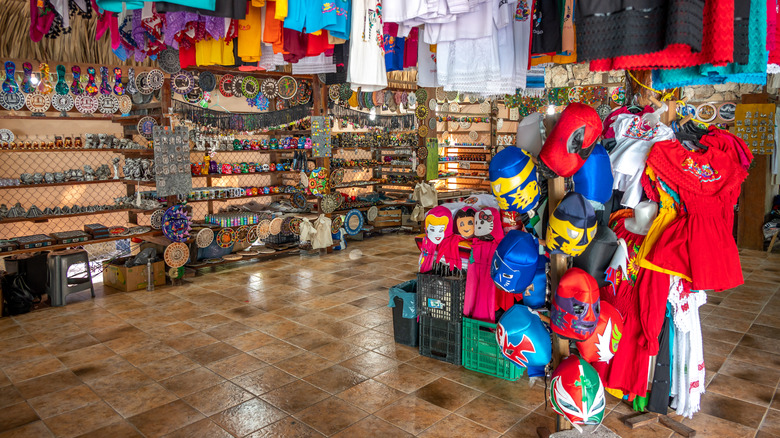
Jewhyte/Getty Images
While similar to generic souvenir shops, street vendors and their businesses are entirely separate. They are often located near popular tourist spots, like restaurants and bars, and they frequently hike up their prices to capitalize on the high foot traffic of those looking for quick souvenirs, drinks, or snacks. While grabbing something as you explore is tempting, be cautious and aware of their price-gouging tactics. Not all vendors overcharge, but it’s wise to compare prices or seek recommendations from locals to find the best deals. This approach helps you avoid overpriced items and discover quality products at fair prices.
Ben Souza advised that certain shops, like the ones at the ports, have a financial relationship with the cruise lines, which is why the cruise lines “recommend” them. He also shared that tour drivers can occasionally partner with local vendors to get a kickback for bringing tourists to their shops. “What I like to do is find stores that sell locally made items. Instead of helping the cruise lines make more money, you are directly contributing to the local economy of the cruise port that you are visiting,” Souza stated.
High-cost transportation
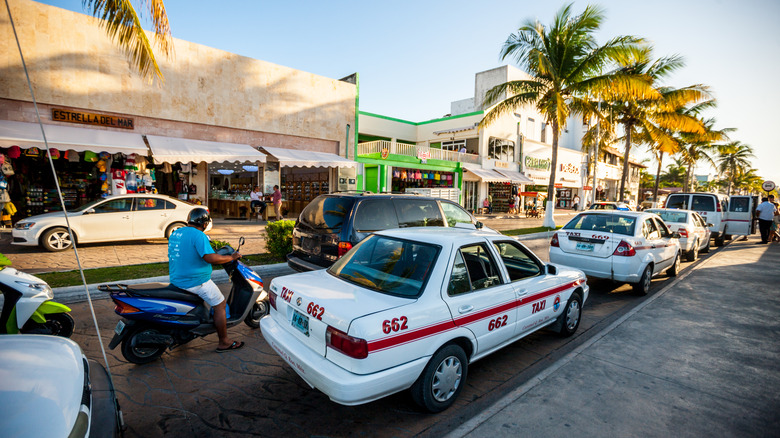
Anouchka/Getty Images
Transportation options like taxis and private cars are available directly outside Caribbean destination ports. Sometimes these are the best options for travelers, and sometimes they aren’t. Whether it’s a taxi, ride-share service, or a private car, transportation at the port is often priced higher than options a little further away. Alternatively, some destinations offer a public transport system. It may not be widely known, but it might be worth the extra research to see what is available.
On a stop in the port of George Town, we enjoyed a short walk into town to seek out a local restaurant, and our ride back to the port was reasonably priced, especially considering our transportation out was free! Exploring transportation options can offer significant savings and add an authentic touch to your travel experience. Public transport systems also provide an insight into the daily lives of locals and can be a more sustainable way to travel.
Themed parks
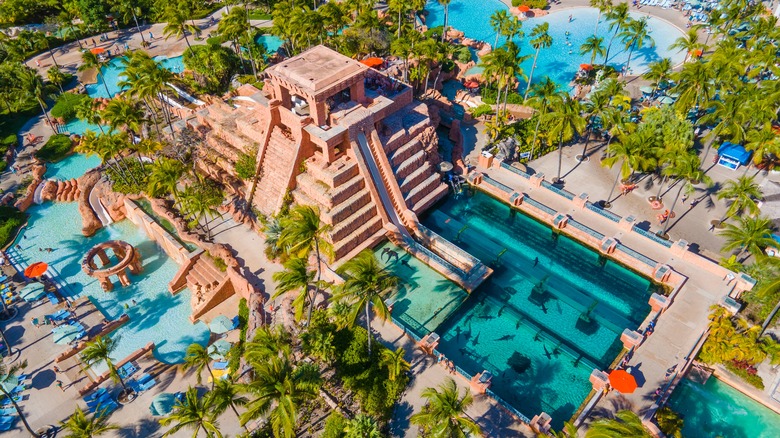
Wangkun Jia/Shutterstock
While themed parks offer a day of fun and entertainment, they are often highly commercialized and crowded. These themed parks know they have captive audiences with cruise travelers and charge exorbitant admission fees for a few hours of fun. “If your cruise ship docks in Nassau, you’ll see many excursions to Atlantis offered. As such, prices to visit Atlantis for cruise ship passengers have skyrocketed in recent years. Considering you won’t have more than a few hours at the resort when visiting on a cruise ship, it’s tough to justify the price,” Allie Hubers stated.
For those looking to explore beyond manufactured thrills, local attractions offer an opportunity to dive into the destination’s culture, natural beauty, and history. Supporting local attractions often comes with the added benefits of smaller crowds, lower costs, and a more relaxed pace. Not to mention, you can feel confident the money you’ve spent is helping the local economy instead of circling back to the cruise line.
Aquariums and marine parks
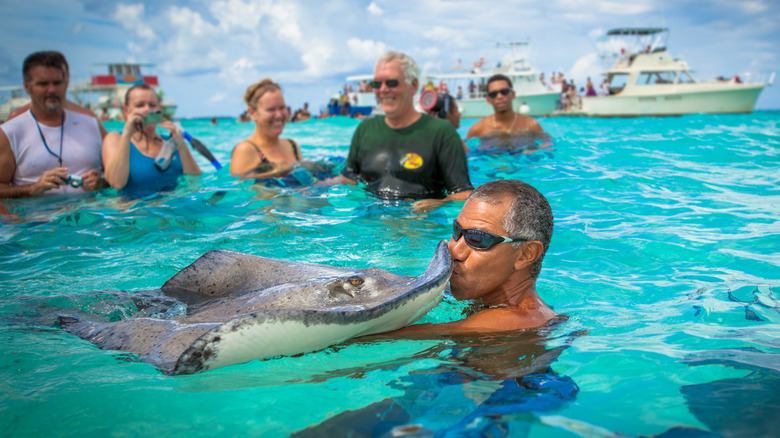
Blue Sky/Getty Images
While aquariums and marine parks offer educational experiences and up-close encounters with marine life, they can often supply a less natural view of the creatures’ habitats and behaviors. These venues often have high entrance fees and can be crowded, especially during peak tourist seasons. For example, a popular dolphin swim experience in Ocho Rios, Jamaica, was anything but popular for one Tripadvisor user. “The entire place is set up that you are constantly walking through vendors and money traps. The interaction with the dolphins was ok, the trainers had great information. To get just one picture of us with a dolphin was over $50.”
Instead of dropping a lot of cash for a subpar experience, opt for natural encounters with marine life in their habitat. While not as guaranteed as a forced dolphin photo, natural encounters can provide more authentic and impactful experiences. Snorkeling, scuba diving, and guided wildlife tours in protected areas allow visitors to see marine life in the wild, observe natural behaviors, and contribute to the conservation of these environments by supporting eco-friendly tourism practices.
Shopping malls
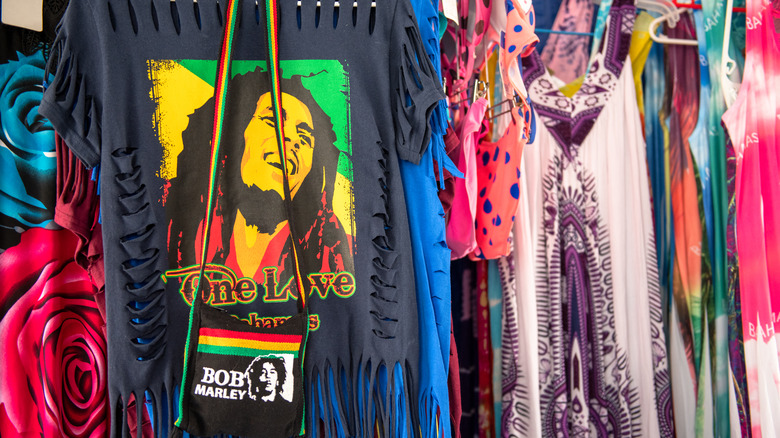
Yelena Rodriguez Mena/Getty Images
Believe it or not, some travelers believe they’ll get great deals on regular purchases if they make those purchases in another country. Sometimes, that is the case, but it’s not usual at malls near cruise ports. Shopping malls are convenient for travelers looking to pick up essentials or spend time in a climate-controlled environment. However, they can have inflated prices and stock international brands found almost anywhere in the world. These malls often lack local charm and unique finds.
A Tripadvisor user described a local mall in the Bahamas as “More than a passable shopping centre for residents of New Providence but not worth the trip for any visitors.” To capture the essence of a destination and support local economies, exploring local markets and boutiques can be a more rewarding option. These places often offer goods unique to the region, from handmade crafts to local fashion, providing a more meaningful shopping experience that reflects the culture and creativity of the area.
Boat tours with hidden costs
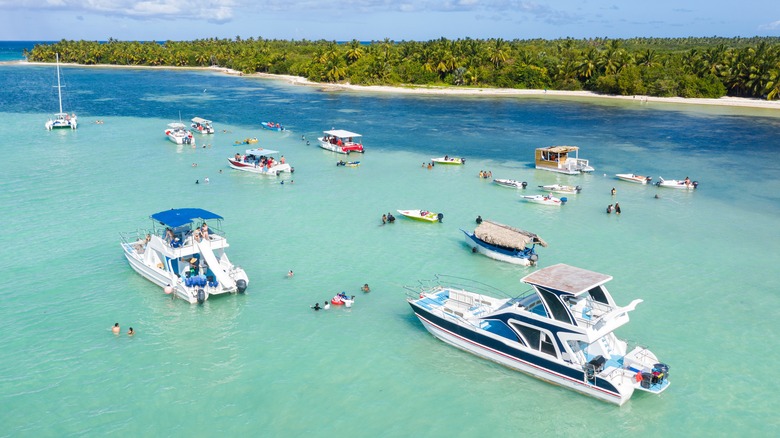
photopixel/Shutterstock
Boat tours are a popular way to explore the islands of the Caribbean. They offer breathtaking views and unique perspectives of the landscape. However, some tours may not be upfront about all the costs involved. As with overhyped excursions, use caution when booking boat tours that don’t communicate all costs before departure. This may lead to unexpected expenses for meals, entrance fees to attractions, or activities that were thought to be included in the price.
Reviewing a recent tour in Antigua, a Tripadvisor user wrote, “We spent more time on the car rather than a single place. We literally spent 10 minutes in the bird sanctuary! We came to the wharf 30 minutes before the ferry time, and even there we had to sit inside the car for almost 1 hour. The fact that not even the park fees are included for 10 minutes that we spent there it’s outrageous.”
To avoid these hidden costs, thoroughly researching and asking for detailed information on what the tour price covers can help ensure a smooth and enjoyable experience. If in doubt, you can skip it and choose another way to see the destination. Opting for tours with transparent pricing and good reviews can lead to a more pleasant and stress-free outing on the water.
Historical sites with high entry fees
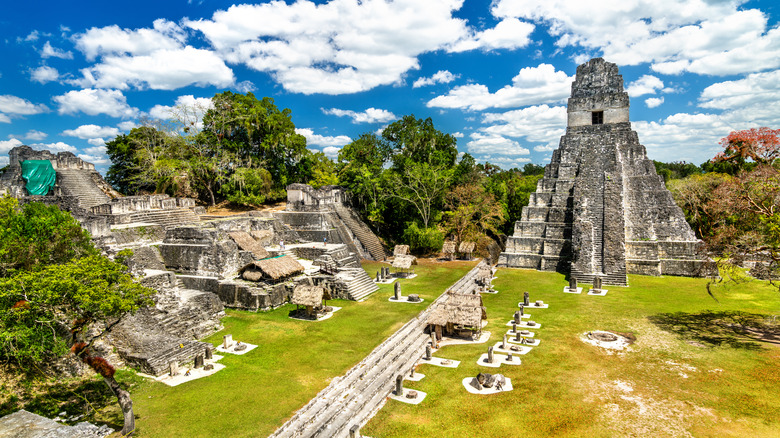
Leonid Andronov/Shutterstock
Visiting historical sites is a highlight for many travelers. Historical sites offer so much value and education, but unfamiliarity with the location may allow you to get caught up in a tourist trap. Some of these sites come with high entry fees that can add up, especially for families or groups. Researching less expensive yet equally enriching historical sites or looking for discount passes, free entry days, or combined tickets can provide cost-effective alternatives. Additionally, make sure you are not being taken advantage of by paying an admission fee where there is none.
A Tripadvisor user shared that she felt that El Cedral in Cozumel was a “total ripoff.” “You pay $3/person to gain access to a depressing, dinky little town surrounding a Mayan ruin that has no signage explaining it’s significance. What a lost opportunity.” Many destinations also offer free walking tours or have lesser-known historical sites that are free or request a minimal donation, allowing visitors to explore rich history without the hefty price tag.
Popular bars and clubs near ports
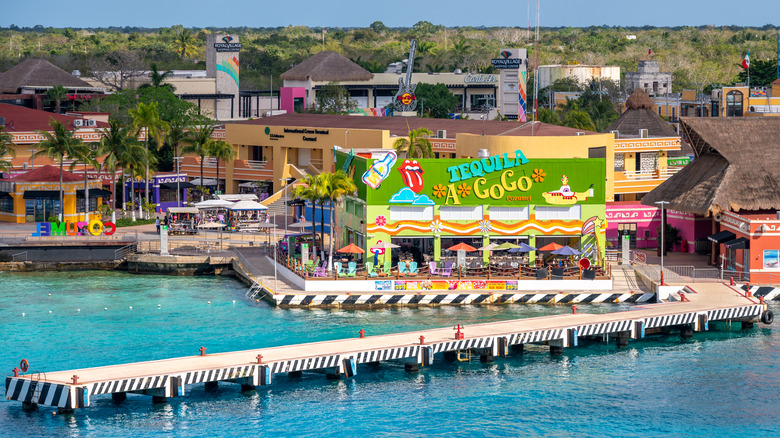
Jewhyte/Getty Images
Bars and clubs near cruise piers are designed to cater to tourists, and they usually feature inflated prices for drinks and entry fees to go along with it. While they are convenient nearby entertainment, exploring local nightlife away from the tourist hotspots can lead to a more comfortable and potentially less expensive evening out. Unfortunately, lots of these establishments claim to be “family-friendly,” as they know many cruisers vacation with their families. Most of the reviewer comments on Tripadvisor concerning these bars and restaurants at the piers say they are “too loud,” “too expensive,” and take too much time out of their port day.
Local pubs, bars, and clubs frequented by residents tend to be more laid back and showcase the destination’s authentic nightlife culture. Not to mention, there are most likely more reasonable prices and a welcoming atmosphere at these establishments. Engaging with locals to find recommendations for the best spots can enhance your nightlife experience significantly.
Cable cars and funiculars
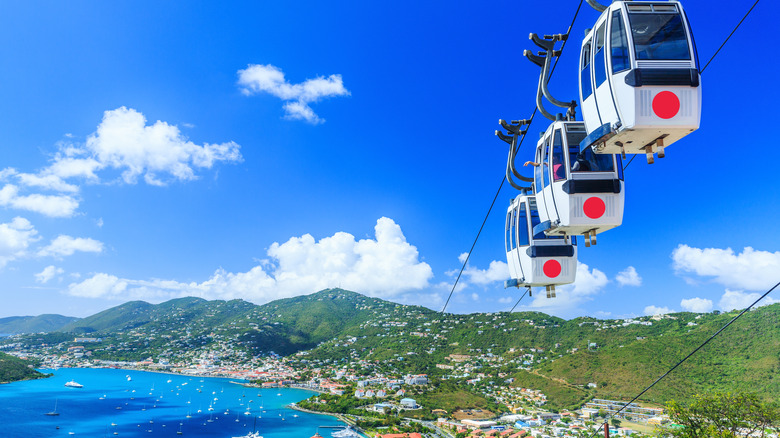
SCStock/Shutterstock
Cable cars and funiculars are types of transportation systems that involve a cable attached to a car or trolley, but cable cars are not permanently attached to those cables, while funiculars are. Funiculars depend on a pulley system and are typically seen on mountainsides as they can climb steeper grades than cable cars. These unique modes of transportation may seem like a novelty or a must-do because of their uniqueness. While they offer spectacular views and easy access to elevated points of interest, they can sometimes come with a steep price tag. Regarding the Skyride to Paradise Point in St. Thomas, one Tripadvisor reviewer shared, “Paradise Point is way overpriced. $21 to ride the tram, $21 to ride the ridiculous Ferris wheel, $15 frozen drinks. Shops are expensive and nothing is original.”
Before deciding on these transportation options, consider whether the view and convenience are worth the cost. In many destinations, alternative viewpoints can be found via hiking trails, offering equally stunning vistas without the expense. Exploring these alternatives saves money and adds an element of adventure and physical activity to your trip, allowing for a more immersive experience of the natural landscape.
Methodology
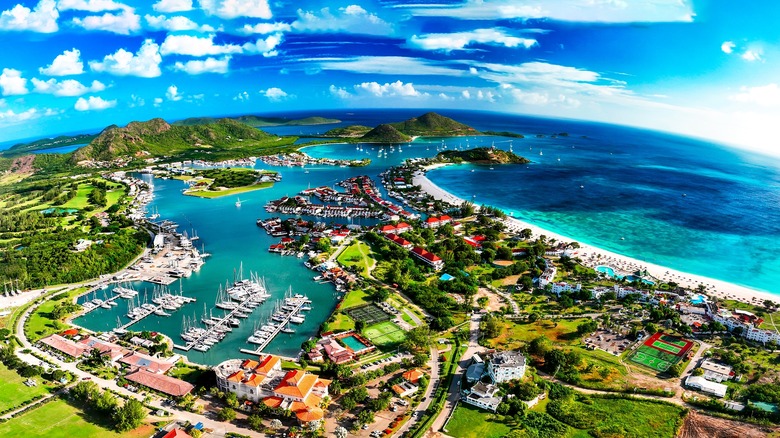
Nikolay 007/Shutterstock
How did we determine what was a tourist trap? We first consulted expert testimony from experienced cruisers and writers at Royal Caribbean Blog and Cruise Fever. Then, we combed through hundreds of Tripadvisor reviews to get a good sense of whether someone just had a one-off bad experience or if a location or activity was truly a “trap.” Finally, we added in our own experience, where we were able to arm you with the knowledge you need for your next Caribbean cruise.

